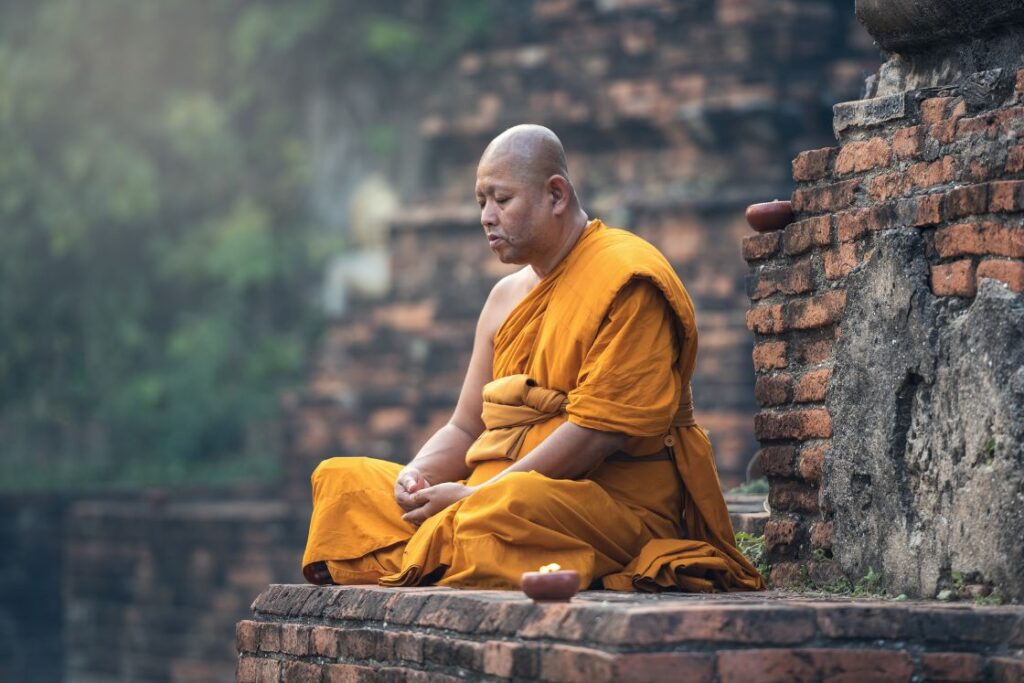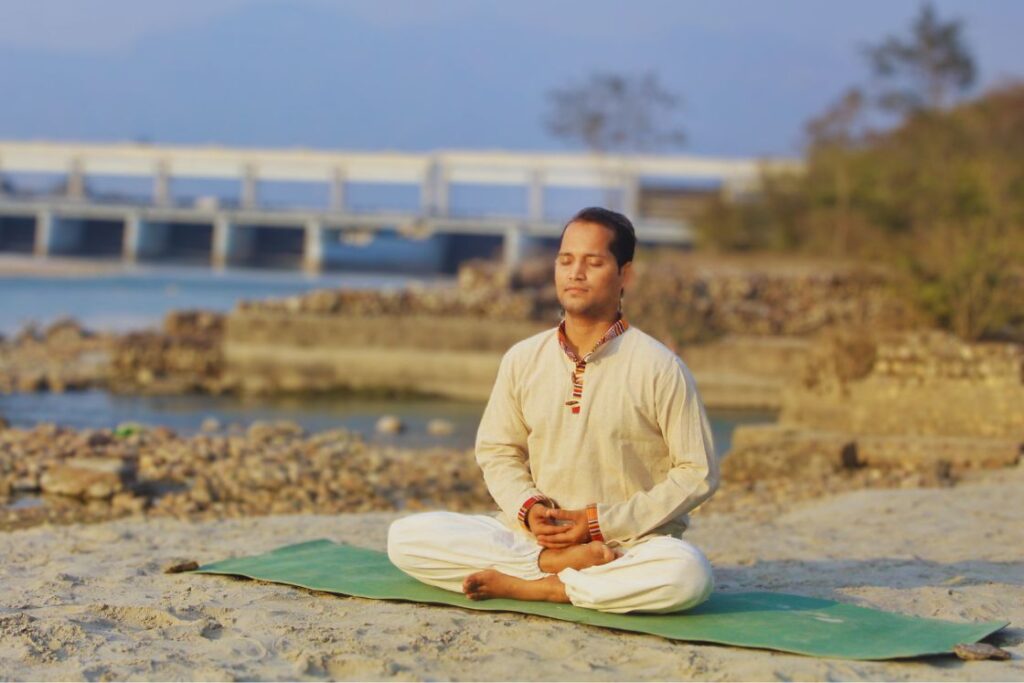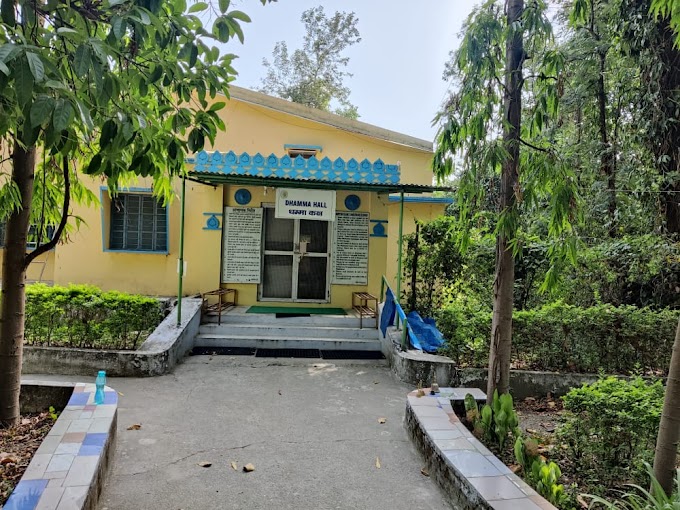[ad_1]

Life is ever-changing; we all traverse a myriad of experiences, yet certain moments remain etched in our hearts. Sometimes, these are positive encounters, and at other times, remarkably transformative ones (Yes, that’s how I define my challenging experiences – as profoundly transformative).
I can’t recall what prompted me to enroll in a 10-day Vipassana course. Not long ago, a friend casually introduced me to Vipassana, describing the silent retreat where one disconnects from phone, internet, and basically external world engaging in 10 hours of meditation daily for ten days. The idea fascinated me, evolving into an adventure I yearned to undertake. Within a month of this whimsical decision, while randomly surfing the internet, I stumbled upon detailed information about this meditation technique derived from Buddha’s teachings. In that instant, the thought of Vipassana resurfaced, and I promptly registered for the course.
The path that led me to Vipassana might seem ordinary to you, but for me, “It was one of the wonderful decisions of my life made so spontaneously” – a realization that only dawned upon me after completing the 10-day journey into Vipassana practice. This newfound contentment was absent in the initial days, persisting until the third day of Vipassana. What transpired? Hang on; allow me to recount my journey into Vipassana practice.

Vipassana revolutionized my perception of the world, not only the external realm but more significantly, the inner world – my mind, thoughts, emotions, attitude, anger, good, bad, and everything that incessantly occurs within us until our last breath.
Being someone who habitually questions their decisions, I found myself in a state of uncertainty about the rightness of choosing to attend Vipassana until the third day. Despite the rigorous rules and regulations at the Vipassana center, with some participants abandoning the course mid-way, I didn’t regret my decision. The challenge lay in my eagerness to glean insights from Vipassana meditation. While I could meditate at times, restlessness consumed me during sessions when I yearned for profound insights. What insights, you ask? Insights accumulated in my mind from others’ meditation experiences, books, shallow practice, internet articles, and more – I desired to experience it all!
During meditation, my mind would chatter with thoughts like, “You’re following Buddha’s teachings. You must be experiencing something like him.” Despite the prohibition on reading, writing, and phone usage at the centre, the mental chatter accumulated over a lifetime persisted, prompting the strict rules during the course.
Anapana meditation
Let me share that until the third day, the focus was on a specific practice in Vipassana called Anapana meditation. Anapana involves observing the natural breath as it enters and leaves, directing attention to the nostrils and noting sensations in the triangular area formed by the upper lip and nostrils during inhalation and exhalation.
The technique may sound simple, but, as I write now, it appears straightforward even to me. However, simplicity becomes elusive when the mind is not in harmony. The mind, a beautiful demon, created challenges. Until the third day, despite my expectations, Nirvana eluded me (I was secretly hoping for it). Jokes aside, I anticipated a genuinely transformative experience.
The night of the third day proved challenging. My mind bombarded me with questions, attempting to convince me that coming to Vipassana was a wrong decision since it didn’t align with my expectations. It felt like a fierce debate within me, with my mind questioning, “Why did you come here if you aren’t gaining insights? What’s the point of observing your breath in the same old way? Maybe this technique isn’t for you, a total waste of time. Perhaps I should practice meditation differently.”
Amidst these questions, an intense desire to complete the journey persisted. I confronted the doubts and excuses my mind presented, reassuring myself that I hadn’t made a wrong choice. “Ashish, wait, you made the right decision. Keep going the way you are; don’t succumb to the mind’s doubts.”
I was wrong; I thought I was arguing with my mind. Nonetheless, I soon fell asleep, and the night passed, ushering in a new day.
Fourth Day
The fourth day marked the Vipassana day in the 10-day course, where we were to learn the actual technique. The night before, I decided to discuss my dilemma with Guru Ji, the representative teacher at the ashram. Since my arrival, I hadn’t uttered a single word (though my mind was quite talkative). Vipassana encourages Noble Silence – not just verbal silence but also mental silence, refraining from non-verbal communication with fellow practitioners.
While basic instructions, conduct codes, and schedules were posted on the bulletin board, I now needed to seek guidance from Guru Ji. During the afternoon break after lunch, I approached Guru Ji at the Dhamma Hall, where group meditation sessions occurred.

Before I could speak, Guru Ji asked, “Sab shi se krre ho na? (Everything going correctly, right?)” and I simply nodded. I then expressed my uncertainty about the effectiveness of Anapana meditation, the practice we had been doing for the past three days.
I asked him, “Guru Ji, I’ve been diligently practicing the Anapana meditation technique (which we have been doing for the last three days), but I’m not entirely sure if I am grasping what I am supposed to derive from this.”
Guru Ji instantly grasped my concern, evident from his smiling face. He shared a profound analogy, comparing my hunger for Vipassana experiences to the hunger for food.
He responded, “When we’re genuinely hungry, even a small amount of food can suffice. However, when hunger consumes us, no matter how much we eat, it fails to satisfy. You’re eagerly craving to delve into the Vipassana experience, embracing all that you’ve envisioned in your mind, and there’s nothing wrong with that. Many individuals who come here carry a lot of mental clutter regarding meditation, enlightenment, and various expectations. But it’s crucial to grasp that this eagerness can become overwhelming if not addressed early on. The essence of Vipassana Meditation lies in mindfulness, in being fully aware of the sensations occurring in your body at this very moment. If you’re able to experience even the smallest moments of such awareness, you’re already immersed in meditation.
Consider your hunger for this experience already satisfied with the nourishment you’ve received. What’s surfacing now is the lingering hunger from your past experiences, and it’s essential to recognize that this hunger is no longer present; only its shadow remains.“
He emphasized that experiencing even the slightest awareness of bodily sensations in the present moment constitutes true meditation. My hunger, he explained, had already been satisfied; what remained was the shadow of unsatisfied hunger from my past.
Listening attentively, the afternoon bell rang, signaling the end of our conversation. Without further words, Guru Ji adjusted his posture, preparing for meditation. Emotionally overwhelmed, I decided to take a 5-minute break to absorb his teachings. I stepped outside, grabbed a glass of water, and sat beneath a tall tree in front of the Dhamma Hall.
Guru Ji’s explanation clarified one thing – I needed to stop imposing past ideas of meditation insights on my present practice. What mattered was what I was doing at this moment, how I was doing it – that was the essence of correctness. In these moments, I found joy in my own company and heightened awareness of my actions. Restlessness only arose when past ideas questioned me. I had to accept occasional restlessness.
With this mindset of acceptance, I returned to the hall, took my seat, and commenced my Vipassana practice following the morning session’s instructions. Similar thoughts still entered my mind, but each time, I acknowledged the truth of the moment. Instead of forcing my mind away from thoughts, I allowed myself to observe the mind delving into the thoughts. This way, I realized that no single thought lingered for long – the essence of the entire Vipassana practice.
The fourth day’s discourse delved into the essence of Vipassana. Each evening, as life continued its ever-changing course, the journey into Vipassana unfolded – a transformative experience that defied my initial expectations.
Fifth Day
On the fifth day, the Vipassana practice intensified as we delved deeper into the technique. The morning session focused on observing bodily sensations systematically, moving from head to toe. The challenge was to remain equanimous, not reacting to pleasant or unpleasant sensations but merely observing them. As the day progressed, my mind fluctuated between moments of clarity and periods of wandering thoughts.
During the evening discourse, the teacher emphasized the importance of observing sensations without attachment or aversion. The understanding that sensations, whether pleasant or painful, are impermanent and constantly changing became a cornerstone of my practice.
The night brought its own challenges. As I sat in meditation, my mind grappled with restlessness and impatience. Doubts resurfaced, questioning the effectiveness of the practice. Yet, with each passing moment, I reminded myself of Guru Ji’s wisdom – to observe without craving or aversion.
Sixth Day
The sixth day unfolded with a deeper immersion into the Vipassana technique. The focus shifted to observing the sensations with more subtlety, refining the awareness of the ever-changing nature of the body. The persistent effort to maintain equanimity in the face of discomfort or pleasure became a meditative dance.
During the discourse, the teacher emphasized the importance of self-discipline and the need to purify the mind. The understanding that the mind’s purification is a gradual process resonated with my experiences. I began to witness a subtle transformation within – a growing awareness and acceptance of the impermanence of sensations.
As the day concluded, the nightly meditation brought forth a sense of calm. The internal chatter gradually subsided, replaced by a quietude that allowed for a more profound connection with the present moment.
Seventh Day
The seventh day marked a pivotal juncture in the Vipassana journey. The morning session introduced the practice of Vipassana itself – observing sensations throughout the body, exploring the intricate interplay of sensations and the mind. The challenge lay in maintaining continuous awareness, not succumbing to distractions.
The discourse on this day illuminated the concept of sankharas – the mental conditioning that gives rise to sensations. Understanding the nature of sankharas provided a framework for observing the subtlest vibrations within.
The day unfolded with a blend of moments of clarity and periods of internal turbulence. The continuous practice fostered a growing acceptance of the ebb and flow of sensations. The evening discourse reiterated the importance of cultivating a balanced mind – neither elated by pleasant sensations nor averse to the unpleasant.
As the seventh day drew to a close, the nightly meditation session became a silent communion with the essence of Vipassana. The journey had evolved into a profound exploration of the mind-body connection, paving the way for deeper self-awareness.
The following days promised more revelations and challenges as the Vipassana journey continued, each moment offering an opportunity for transformation and inner growth. The silent retreat had become a transformative odyssey, leading me to unravel the mysteries of my own mind and the impermanent nature of all phenomena.
Eighth Day
The eighth day brought a significant shift in the Vipassana course. The morning session introduced the practice of Vipassana on a global scale, where the focus expanded to observe the entire body simultaneously. The challenge intensified as the mind grappled with maintaining awareness throughout the intricate network of sensations.
The discourse emphasized the importance of patience and perseverance in the face of challenges. The teacher highlighted that progress in Vipassana is gradual and emphasized the need to remain equanimous during moments of heightened intensity.
As the day unfolded, the internal exploration became more profound. The persistent practice allowed me to observe the subtlest nuances of sensations, fostering a deep sense of interconnectedness between the mind and body.
Ninth Day
The ninth day marked a turning point as the vow of noble silence (moun) was lifted. After days of silent introspection, the meditators were encouraged to gradually transition back to spoken communication. The morning session continued with Vipassana practice, and as the silence lifted, a unique energy permeated the meditation hall.
During the afternoon break, the once-silent hall echoed with whispers as meditators exchanged their experiences, insights, and challenges faced during the course. The conversations were marked by a newfound understanding and a shared sense of accomplishment.
The evening brought a special session – Metta Meditation, the practice of loving-kindness. As the entire group collectively generated thoughts of goodwill and compassion, a palpable sense of warmth and harmony enveloped the meditation hall.
Tenth Day
The tenth and final day of the Vipassana course dawned with a mix of reflection and anticipation. The morning session marked the culmination of the Vipassana technique, with instructions on how to integrate the practice into daily life.
The day continued with the practice of Metta Meditation, radiating love and compassion to all beings. The shared energy of goodwill created a sense of unity among the meditators.
The afternoon session was devoted to understanding the importance of donation (dana) in the Vipassana tradition. The course, including accommodation and meals, is offered free of charge, and participants are encouraged to contribute voluntarily based on their means. The act of donation serves to maintain the purity of the teaching, ensuring that it remains freely available to all who seek it.
In the spirit of dana, I made a donation of 8,000 INR (~ 100$) as an expression of gratitude for the invaluable teachings received during the course. The act of giving also symbolized a commitment to support the continuation of this tradition and make the benefits of Vipassana accessible to others.
The final evening discourse emphasized the importance of carrying the practice forward, integrating mindfulness into daily life. The teacher encouraged meditators to continue their practice with sincerity, fostering a journey of self-discovery and inner transformation.
As the sun set on the tenth day, the atmosphere in the meditation hall shifted from silence to a hum of gratitude and accomplishment. The Vipassana course had not only been a silent retreat but a profound inner journey, unraveling layers of the mind and paving the way for a life enriched with mindfulness and equanimity.
Final words
As for me, I embarked on my Vipassana journey with a 10-day course in November 2022 at Dhamma Salila in Dehradun. Since then, I’ve endeavored to integrate the practice into my daily routine, dedicating 10 minutes each morning and evening to Vipassana. Admittedly, life’s demands occasionally disrupt this routine, but even in those moments, I’ve noticed a subtle shift in my mental calmness as a testament to the impact of consistent practice.
For those curious about this transformative experience, you can explore course schedules and register for sessions at Dhamma Salila by visiting https://www.dhamma.org/en/schedules/schsalila. If Dehradun is not within your reach, you can discover a Vipassana center near you by checking https://www.dhamma.org/en/courses/search. The journey of self-discovery through Vipassana is not just an exploration of the mind but a commitment to a more mindful and equanimous way of life.
[ad_2]









